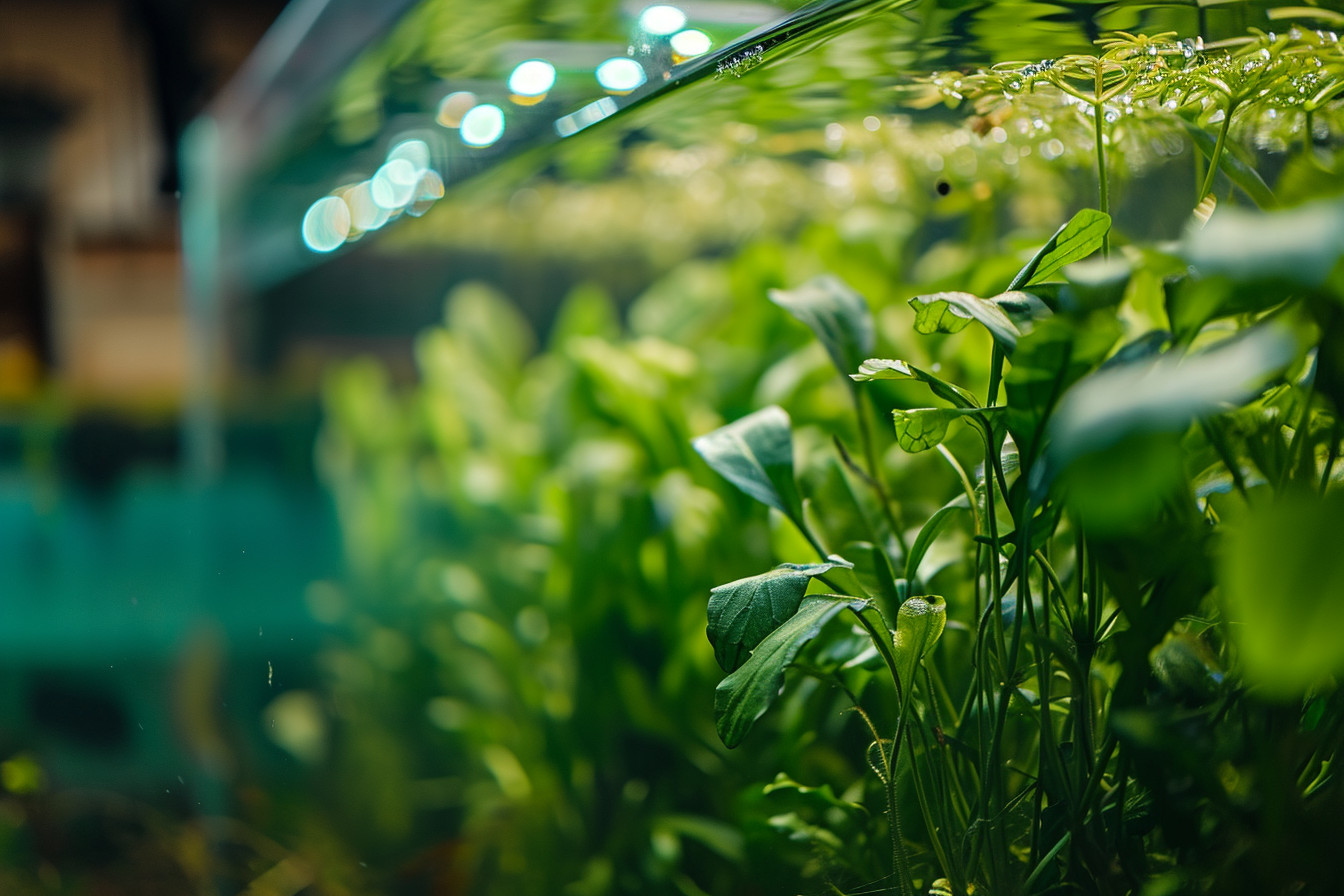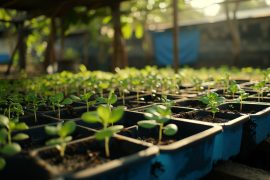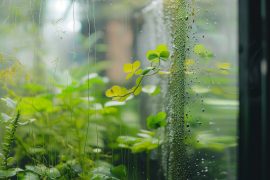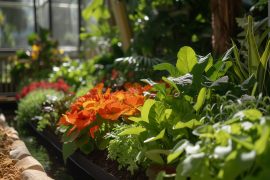I’ve always found a certain peace in the hum of my aquaponic system, the way the water circulates, and the plants sway gently. It’s a slice of harmony marrying aquaculture with hydroponics. But like any garden, it’s not without its hiccups. When my pump started making that weird noise, or when the plants just weren’t thriving, I knew it was time to roll up my sleeves.
Troubleshooting an aquaponic system can be a bit like solving a mystery. You’ve got your suspects – pH levels, nutrient imbalances, lighting issues – and you’ve got to suss out the culprit. I’ve been through it all and let me tell you, there’s always a solution. So, let’s dive into some common issues you might face and how to get your system back to that serene, productive state we all love.
pH Level Fluctuations
When I first got into aquaponics, I was mesmerized by the delicate dance between fish and plants. The synergy was not just productive but also deeply calming. However, maintaining this harmony involves keeping a keen eye on factors like pH levels, which are crucial for a thriving system. Let’s dive into the world of pH levels and see how we can keep them stable, no sweat.
Understanding the significance of pH in an aquaponic system is straightforward – it’s the measure of how acidic or basic the water is. Fish, bacteria, and plants each have their preferred pH ranges. Generally, fish thrive in water with a pH of 6.5 to 8.0, while plants prefer something a tad more acidic.
Picture this: one day I’m out there, feeling the soft breeze and all’s right with the world. Then I notice my lettuce looking a little droopy. That’s a red flag. Time to pull out my handy pH test kit. If the pH is off, it might be causing the plants stress. Here’s a brief account of what can cause those pesky fluctuations:
- Overfeeding your fish can break down into acids, lowering the pH.
- Rainwater, if you’re using it, has a naturally low pH.
- The tap water in many areas is alkaline and can raise the system’s pH.
Before you get your garden gloves in a twist, rectifying pH levels can be quite simple. If your pH is too high, adding a natural acid like citric acid can help. On the flip side, if it’s too low, a bit of hydrated lime might do the trick. Remember, it’s all about gentle nudges rather than drastic changes.
Here’s a quick table on what I check for:
| pH Issue | Possible Causes | Simple Solutions |
|---|---|---|
| pH too high | Overuse of tap water | Citric acid |
| pH too low | Heavy rainwater intake | Hydrated lime |
| Sudden changes | Overfeeding fish | Reduce feed, check filters |
Nutrient Imbalances
As I’ve wandered deeper into the world of aquaponics, I’ve found that achieving and maintaining nutrient balance is kind of like finding your zen in a meditative garden. It’s essential for that harmonious relationship between fish, plants, and bacteria. Nutrient imbalances, they’re tricky – too much of one thing, not enough of another, and you’ve got yourself a problem.
So here’s the scoop: plants need a variety of nutrients to thrive, same as us. Nitrogen, potassium, and phosphorus – those are the biggies. But they also need a host of micronutrients like iron, calcium, and magnesium. In a perfect world, your fish feed would provide all these in the right amounts. But our world’s perfectly imperfect, right?
Take my system, for instance. I noticed my plants looking a little pale, leaves turning yellow. A classic case of iron deficiency. I could use a chelated iron supplement, or better yet, I opted for natural sources like red clay or worm compost. Both are full of iron and other micronutrients, and they help the plants get back that vibrant green.
Now let’s talk about the balance part. You introduce fish to the system and they’re like little nutrient factories. But every fish species is different, with its own dietary needs and waste production. Too many nutrients, and you risk algae blooms or even toxic conditions for your fish. Too few, and your plants start to look like they’re on a diet, all frail and starving.
Here’s an example that might help clear things up. Remember my friend Alex? They had this gorgeous aquaponic setup, but somehow her tomatoes were always subpar. Turns out, her tilapia weren’t high producers of potassium – a must-have for fruiting plants like tomatoes. The answer? A potassium supplement, specifically potassium bicarbonate, did the trick. It was like she invited her plants to a feast after a famine.
Tools of the trade? Test kits. Regularly testing your water for nitrate, phosphate, potassium, and pH levels is something you can’t skip. It’s not just about dumping nutrients in and hoping for the best; it’s about understanding and fine-tuning. That’s gardening for you – a blend of art, science, and patience.
Lighting Issues
As I’ve delved deeper into the world of aquaponics, I’ve come to appreciate how essential proper lighting is for the health of the plants I nurture. Just like nutrients, lighting can make or break your system, and figuring out the issues often feels like solving a puzzle.
Plants need light to photosynthesize, and without it, they can’t produce the food they need to grow. But it’s not just about flipping a switch on and off; the type of light, its intensity, and the duration it’s provided all play critical roles. When plants aren’t getting the light they need, they tend to look weak or discolored, a sure sign I need to check my lighting setup.
I had a bout with leafy greens looking spindly and pale. It was a classic case of leggy plants reaching for more light. They were telling me they needed more intensity or closer proximity to their light source. On the flip side, when leaves start to brown or look scorched, it’s often because they’ve gotten too much of a good thing. Finding that sweet spot is key.
The Right Light
Selecting the right lighting for an aquaponic system is about understanding what your plants need. Many plants thrive under full-spectrum LEDs because they mimic natural sunlight and consume less energy than older types like fluorescent or HID lamps. I’ve also learned to adjust the height of my lights as plants grow, keeping them at an optimal distance to avoid too much or too little exposure.
Timing is Everything
The light cycle is another critical aspect I had to get right. Different plants have different needs when it comes to the amount of light they receive each day. For instance, fruiting plants typically require longer light periods compared to leafy greens. I use timers to regulate light cycles, which helps simulate natural day and night patterns. Timing isn’t just vital for plant growth; it also helps maintain a balanced ecosystem in the tank below.
Monitoring and Adjusting
Here’s where the technical meets the practical. It wasn’t enough to just set up lights and walk away. I had to keep an eye on the system and make regular adjustments. For months, I’d track the growth of my plants and take notes on any changes I made, whether it was altering light positions or adjusting the timers. It paid off when I finally saw consistent, healthy growth across my system.
Pump Malfunctions
Troubleshooting pump issues in an aquaponic system can be a bit like detective work. It’s thrilling, in a way, because you’re diving into the heart of the ecosystem–the component that keeps water flowing and your plants and fish thriving. Usually, I find myself listening for odd noises or checking for unusual water flow as the first clue.
Last summer, I encountered a problem: my pump suddenly became as quiet as a whisper. At first, I thought it was a blessing, but then I realized the gentle hum that usually filled my garden space was due to the pump not working at all. There was a moment where the silence of the water felt serene, even contemplative. Yet, that tranquility was a red flag. I had to resolve the issue before it created a ripple effect on my entire setup.
When tackling pump malfunctions, I always start with the basics:
- Ensure it’s plugged in and that there’s no power outage (seems obvious, but it’s often overlooked).
- Check for any tripped circuits or blown fuses.
- Inspect the pump for clogs, as debris can cause significant issues.
How I tackle each issue is pretty straightforward. If there’s a power problem, resetting the circuit or changing the fuse might be necessary. For clogs, I’ve got to roll up my sleeves and clean it out. But it’s rewarding, like clearing a blockage to restore balance.
Another common hiccup happens with the impeller–it’s the heart of the pump, spinning tirelessly to move the water. If it’s stuck or sluggish, the system suffers. I once forgot to do a seasonal cleaning and paid the price. The impeller had become encrusted with mineral deposits, and the whole system slowed to a crawl. A bit of vinegar and careful scrubbing was the simple yet effective solution, and order was restored.
To maintain peace of mind and mitigate pump malfunctions, I’ve learned that regular maintenance is everything. It’s like taking a quiet moment each day to ground yourself; preventative care for your pump ensures a harmonious system. So, create a maintenance routine:
- Clean the pre-filters regularly.
- Inspect the impeller and housing every few months.
- Replace worn or damaged parts promptly.
Poor Plant Growth
When I stroll through my aquaponic garden, part of what I’m looking for is that silent communication plants have when they’re thriving. This organic harmony becomes disrupted when my plants aren’t growing as they should. It’s like they’re telling me, “Hey, I’m not happy!” Poor plant growth can be as puzzling as it is frustrating, but experience has shown me it’s often tied to a few common issues.
Nutrient imbalances are the big players in this game. Just like us, plants need a balanced diet to grow strong and healthy, and they get their nutrients from the water in an aquaponic system. If the fish aren’t well or the feed’s not right, the plants will show it. One sign of nutrient imbalance is discolored leaves – a surefire signal that I need to test the water. I’ll check for nitrate levels, pH balance, and other essential elements. It’s a bit like being a detective, looking for clues in the color and growth patterns of the plants.
But it’s not just about what’s in the water. It’s also about what’s getting to the plants—or more precisely, what’s not. I’ve learned the hard way that root issues can stifle growth. A tangled mess of roots may look impressive, but it can spell trouble. Roots need room to breathe, and compacted or unhealthy roots are a no-go zone for good growth. I’ll gently inspect roots for any signs of decay or congestion, taking care not to cause further damage.
Lighting is another piece of the puzzle. Plants need plenty of light to photosynthesize and grow, and a lack of proper lighting could mean stunted growth or weak plants. My rule of thumb is to make sure each plant receives the right amount of light and to adjust my grow lights as needed. With a bit of tweaking, I can often see improvement within days.
I also keep an eye on the water temperature. Aquaponic systems are a bit finicky about temperature, as both fish and plants have their sweet spots. Too warm or too cold, and you’ll see it in your plant growth. Consistent monitoring ensures I’m keeping the water at an optimal temperature for all inhabitants of the ecosystem.
- Monitor nutrient levels through water testing
- Inspect root health
Final Thought
So there you have it—my take on getting to the bottom of those pesky problems in aquaponic systems. Remember, a keen eye and a bit of know-how can go a long way in keeping your plants thriving and your fish happy. Don’t let a hiccup here or there discourage you. Stick with it and you’ll become a troubleshooting pro before you know it. Happy aquaponing!







